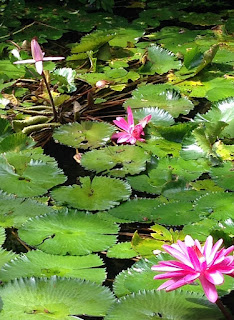Although I have a garden at home, a.k.a. my Food Forest, I also have plots at the Wangaratta Community Garden. Over the past two years, I’ve sought more refuge there than usual, and I wasn’t alone. Pandemic gardening was a trend that really bloomed during that time.[1]
A community garden is a space where gardeners can rent plots to grow nutritious produce.
I’ve discovered that extraordinary things grow at community gardens; food, weeds, and – of course – community. It’s a place where friendships flourish, ideas blossom and happiness grows.
Much is written about the health benefits of gardening. It’s relaxing and calming, and because the changes in the garden happen so slowly, it’s hard to panic or be overly busy while you’re there. A great deal of research also shows how community gardens reduce crime[2], preserve green space, stimulate social interaction and community development, encourage self-reliance and beautify neighbourhoods; all while providing nutritious food.
I’m not a natural gardener. It doesn’t matter how hard I try, too much of my garden dies. I’m also full of excuses about this; I just can’t keep the watering up, work gets in the way, or it’s the summer holidays.
Watering takes regular, and often twice-daily trips during the hot summer to keep everything going. Before last summer, driving to the plots twice daily, to hand water, didn’t make sense. The food miles were adding up, and as much as I loved gardening, the water runs were too much. So rather than get discouraged, I got organised.
It made a lot of sense to set up a timed irrigation system. I knew I wasn’t the only gardener with a life; so there was a good chance that others were also unable to handle twice daily water. Consequently, when I had some time on my hands, I installed a timed irrigation system and turned my gardening beds into a demonstration plot.
Oh, the power and smugness of statistics! Now, I can now tell you exactly how much water I use and how many kilograms my plots yield. Ask me anytime.
I was keen to grow protein and carbs. That saw me planting maize, potatoes and zucchinis (summer squash for any Americans reading this). The Resilient Gardener proved an inspiring and invaluable resource, and by November 2020, my plants were all in and growing well. Good spring rain meant little watering, and my plot’s sprays went every 72 hours, so very little maintenance was required.
However, I frequently missed Sunday morning tea with the other gardeners, because I didn’t need to be on site as often. This meant less knowledge and produce sharing, and I caught fewer hints and tips on how and what to grow and when.
Now I’m still on-garden very regularly, though. It feels good to get involved in more than my own plot and – I admit – it feels good when older gardeners ask me to lend them a hand. Ever the boy scout, I often find myself organising manure deliveries; weeding for fellow gardeners, who are in hospital or on holiday; or mowing the grassed areas (there are a lot – does anyone have a spare ride-on mower?).
Not long after I installed my irrigation system, I changed jobs, and my working hours increased. However, last summer, because I had outsourced the main watering task, my allotment survived summer for the very first time and even thrived.
This year, my potato plot has yielded about 60 kg, and my maize about 50 kg. I’ve yet to hull, and then grind the maize into polenta, grit or flour but that’s next. The zucchinis – well – I think my nine plants have produced over 150 kg and have fed five households and a Neighbourhood House. The eggplants have started their run late and yielded over 30kg. The day my daughter cracked open a watermelon, I was all smiles and gave it a resounding thumbs up for sweetness and flavour.
How much did my freedom cost? My release from the twice-daily hand watering task was cheap as chips and resulted in my most successful harvest. All up, it cost about $450 in irrigation parts, plus my time to dig and lay, and – because the community garden makes gardening easy – I’ve probably recouped those costs in potatoes alone.
All of us eat food, so we should care about our soil. That’s been my focus this year, and my improved vegetable yields are evidence that this approach works. Regenerating my tiny patch of earth is satisfying, and the fact that the ground was ready for brassicas to go in, the other day, is a bonus.
Where to now? I reckon more plots so more people can garden would be ace. Locally, community gardening is going to continue to grow. It would be nice for all plot holders to have dedicated access to water on their plots. It would also be helpful to have some member education about building soil, a perimeter food forest, water harvesting from our neighbours' roof, accessible wicking beds, and an edible indigenous garden. Oh, and a fit for purpose year round gathering space would top it all off. But, of course, all this is possible with the right support.
What would it take to get you into a community garden, or are you already there?




Comments
Post a Comment